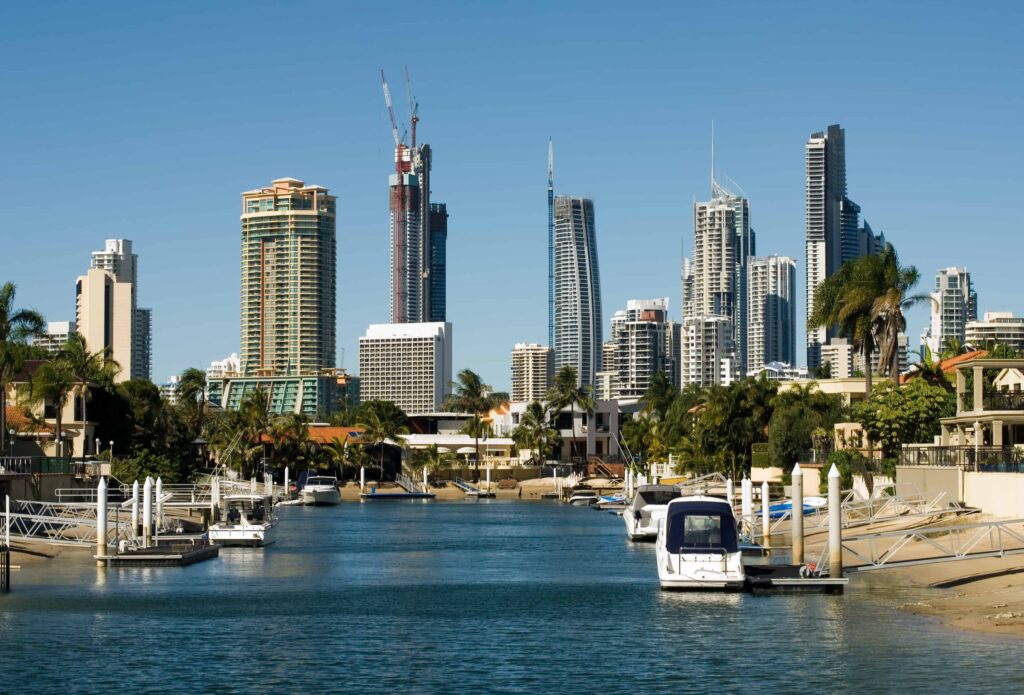
Queensland Treasurer Cameron Dick unveiled the 2023-24 budget on the 13th of June.
This state budget showcases a record surplus of over $12 billion, which the Palaszczuk government will put towards its biggest building and cost-of-living programs.
How is this possible?
State government revenue received a massive boost in 2022-23, thanks to a $10 billion revenue windfall from coal and oil royalties and higher tax revenue.
“We can deliver our state’s biggest cost-of-living program, our state’s biggest building program and deliver lower debt for one simple reason – progressive coal royalties,” Minister Dick said.
Let’s take a closer look at some of the spending earmarked for the construction industry, and what a few industry experts have to say about it.
To sum up briefly:
This budget has generally received positive feedback regarding infrastructure spending and other initiatives, but copped some criticism about limited housing support (more about that further down).
Contents
The Palaszczuk government added $7.7 billion to Queensland’s infrastructure budget from last year.
This means $45 billion will be spent on infrastructure projects over the next four years.
Queensland’s infrastructure funding is now at its highest level in over a decade, representing 12.9 per cent of general government expenditure.
Adrian Dwyer, Chief Executive of Infrastructure Partnerships Australia, welcomes a renewed focus on infrastructure – a sector the economy relies heavily on. He hopes this funding will be used wisely.
“The whole sector, public and private, will need a laser focus over the coming years to make sure this increased spending translates to diggers in the dirt,” Mr Dwyer said.
This infrastructure plan fits into a larger $89 billion four-year capital program called Big Build, which aims to deliver improved services for all Queenslanders.
Examples of key infrastructure projects include:
Priority areas:
A key focus is on transport, which receives the biggest portion of capital spend ($6.9 billion over 2023-24).
This budget will also dedicate $5.6 billion to projects that help Queensland switch to renewable energy.
Treasurer Cameron Dick said regional areas will continue to receive the majority of total infrastructure investments, as was the case in his previous three budgets.
“One of the cornerstones of this budget is the revenue generated by the coal owned by the people of Queensland,” Mr Dick said in his budget speech.
“That revenue is generated in regional Queensland, so it is only right that regional Queensland stands to benefit from what [it] provides.”
Finally, the Big Build campaign sets aside $1.9 billion over four years for venue infrastructure to prepare for the Brisbane 2023 Olympic and Paralympic Games. This funding covers massive projects such as the Brisbane Arena, Gabba Redevelopment and Minor Venues Program.

Women in construction and other male-dominated industries will benefit from a $16 million budget allocation that supports gender equality initiatives.
This package will include $4.6 million over two years to support women undertaking apprenticeships (Women in Trade Apprenticeships Mentoring Program).
Other initiatives:
Queensland Premier Annastacia Palaszczuk says her government is committed to breaking down social and economic barriers for women.
“Because when women and girls are included and participating in the workforce, Queensland’s economy will truly thrive,” Premier Palaszczuk said.
“Women are the future and together as Queenslanders we can achieve great things.”
Read more about the package here.
Master Builders Queensland welcomes the state government’s investment in the Build-to-Rent Pilot Project, and other initiatives that provide secure rental housing.
For example, this budget invests $1.1 billion to deliver social and affordable housing.
However, Master Builders Queensland says this budget still doesn’t meet the enormous demand for secure housing – there simply aren’t enough houses.
A statement from the Master Builders Queensland website:
“The government’s analysis misses the massive increase in people moving to Queensland looking for a place to call home. 44,000 new households in 2022 alone. We need to be able to get on and build.”
Furthermore, the peak body says the government missed an opportunity to provide relief (in the form of a rebate scheme) to potential homeowners who face soaring costs when building a new home. Cost hikes are anticipated to go hand in hand with upcoming changes to the National Construction Code (from 1 October 2023).
“A rebate would help customers offset the increased costs of delivering the changes and help ensure that new housing continues to remain viable. The framework is already there – rebates are provided for homeowners via the Household Resilience Program.”